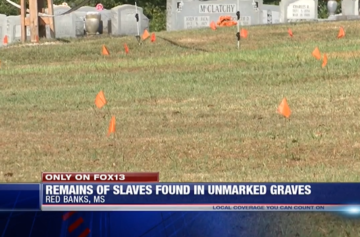It’s difficult to imagine the hardships that 19th century African American slaves endured traveling the Underground Railroad, risking their lives with hopes to one day be free. Of the many fascinating tactics they used along the way, the most visually striking is the secret codes that were sewn onto quilts and hung outside to give warning or tell them the area was safe.
“We’re standing in front of the Bear Paw Trail quilt,” said Teresa Kemp.
She is standing in front of an impressive quilt with blue squares and triangles formed together to produce shapes that look similar to bear paws scattered across a white background. That quilt is one of dozens in the exhibit that depicts secret codes used by slaves to help one another along the Underground Railroad.
“This quilt was used by escaping freedom seekers for people who have been captured and enslaved throughout the United States. They wanted to escape to freedom to Canada. My family used African patters and prints—signs and symbols—as maps and information that they used in Africa to communicate here so that they would not be caught, killed, punished, or brought back to slavery,” said Kemp.
Kemp’s own family was instrumental in making use of the quilts and also preserving their history. She is a graduate of West Virginia State University and ran a museum of her family’s history in Atlanta until 2007, when she took her exhibit on the road. She brought her collection of quilts to the Della Brown Taylor Hardman Art Gallery on West Virginia State University’s campus this weekend.
“This one is our oldest quilt. This is a silk log cabin quilt,” said Kemp as she explained another important quilt in her collection.
The quilt features what Kemp calls the red door code, which was an especially good sign for slaves traveling along the Underground Railroad.
“These quilts, you could hang them outside as if they were going to dry after you had clean them. If they could read they quilt they knew this house was safe to come to,” she said…
Read more: Dave Mistich, West Virginia Public Broadcasting


